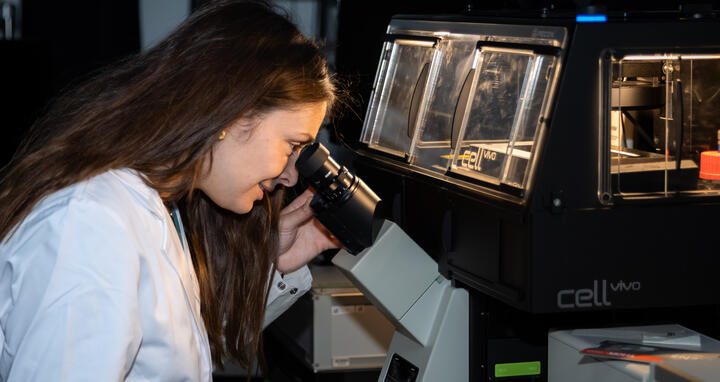Preventing the mass die-off of neurons
Alzheimer's disease causes the brain to shrink. The consequences of this include gradual memory loss, increasing confusion and changes in behavior. Despite decades of research, the exact causes remain unknown.
However, the Alzheimer's brain is well-mapped; in addition to the typical plaques between the nerve cells, tau fibrils are found inside the cells. The tau protein is indispensable because it functions on the cells railway system, potentially ensuring the transport of nutrients get from point A to point B. In Alzheimer's, however, the protein is chemically altered in such a way that its cellular function is affected. The cells lose their shape, stop functioning, and atrophy. A third typical feature is the accumulation of fat.
Financial boost for Alzheimer's research
Dr Melissa Birol wants to know how the tau and fat deposits in the neurons affect the brain. She leads the research group "Single Molecule Biophysics probing Quantitative Neuroscience" at the Berlin Institute for Medical Systems Biology of the Max Delbrück Center (MDC-BIMSB). In addition to the support from the American Alzheimer's Foundation, the non-profit Alzheimer Research Initiative (AFI) is now also funding her work. For the next three years, starting in May 2024, the scientist will receive a total of 193,500 euros for her project. The AFI is the largest private sponsor of Alzheimer's research in Germany.
"We suspect that the cell to cell spread of tau induces the fat profiles in the nerve cells to be incorrectly distributed,” explains Melissa Birol. "As a result, the neurons no longer have sufficient access to the fats." Neurons need these fats to maintain their functions and communicate with other neurons. Birol and her colleagues want to put an end to this unfortunate interplay between tau and fat accumulation.
Visible tau-fat clusters in brain organoids

"To do this, we first need to understand why tau and fats accumulate in neurons and how tau spreads from cell to cell during the course of the disease," says the biophysicist. She and her team have grown brain organoids — pinhead-sized mini-organs to study the early stages of disease in these model systems. With the help of modern imaging techniques, the researchers have succeeded in visualizing tau-fat accumulations within the organoids. This allows them to analyze their shape and composition and observe how they affect the metabolism and activity of nerve cells. In this way, they hope to find out how the fats influence the spread of tau during the course of the disease and vice versa. If they succeed, they could look for therapeutic approaches that specifically target those tau-fat accumulations that are gradually destroying cells.
Text: Jana Ehrhardt-Joswig







